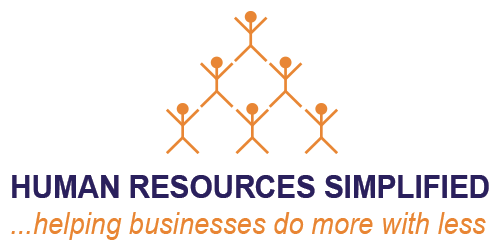 Q. As a small business owner involved in providing Healthcare Technology, what do you feel are the top challenges facing entrepreneurs, especially physicians and other medical providers, dealing with their medical records today?
Q. As a small business owner involved in providing Healthcare Technology, what do you feel are the top challenges facing entrepreneurs, especially physicians and other medical providers, dealing with their medical records today?
A. There are a lot of moving parts and keeping up with each of them is difficult, let alone thinking of them as one. But I would say developing a discipline that helps to look at the entire picture as a whole, is probably the key to being successful.
In this light, I would say that the three biggest trends that come with the most demanding challenges today are compliance, technology, and consumer use of technology.
Let me give an example of compliance and how that may affect the small business employer like me (or you), in trying to offer a technology service.
Because there are so many moving parts, there are times when I need to hire experts in each field but I really don’t need them after the job is done. So this is a normal contractor arrangement, right? Well, not really. Under the HIPAA rules, my company is known as a Business Associate. There are two main types of entities, the Covered Entity, or the Doctor, and the Business Associate, which is any peripheral support company or person that the provider needs and that might have access to confidential patient information or to the technology that stores it. Patient information is protected and is known as PHI or Protected Health Information.
So, what that means to me is that, as a Business Associate to the doctor or provider, if I contract with any third party who may in some way come into contact with my computers or files, even if they don’t look at it, I need a Business Associate Agreement with each of them. This is more than just a piece of paper. This obligates the third party to be aware and to agree that they will take all the same safeguards I take to protect this data. The fines for not doing so are steep, in the millions for a breach. Many of them just won’t do it. And, even if they do agree, I am still required to make sure I take every reasonable action I can to ensure they have safeguards. It’s a rough contract. See the HIPAA Omnibus Rule to dive deeper into this one.
Q. You mentioned the second challenge being technology. What do you mean by that?
A. Just like compliance, technology is changing rapidly, every second. And with the government trying to establish standards and certifications at every corner, a technology product that was usable yesterday, may not be allowed today and doctors lose money by not using allowed technology. Doctors are going nuts with this. There is a product called an Electronic Health Record, or an EHR. It is not really a product; it is more of a way for a medical provider to use a computer to see a patient’s health record and to use that information for billing so that they can be reimbursed.
Vendors have created software programs under the name of Electronic Health Records to address this. These programs are extremely expensive and many doctors just don’t like using them. Many of them feel it slows them down and takes the art of being a doctor out of the equation and turns them into automated commodities. Many patients don’t like them either. It takes face-time away from visits as the doctor is typing on a screen instead of having a conversation with the patient.
So, you may wonder how this affects the small employer like me who is in this field. That answer really boils down to a trust and reputation. I have a relationship with the doctors who are my clients. Many of my clients just want to practice medicine. That is what they love and what they were trained to do. They hire companies like mine to keep up with this stuff for them. That makes me have to deal with keeping up with the flux of this market. If I call it wrong and give bad advice, the doctor takes a big financial hit and word spreads fast. This is especially true here in Florida where the State Medical Association is very strong and well organized. Believe me, they talk. These are very smart people.
Q. What is the “Quality” EHR?
A. Is it software, is it a product, or is it a program? Sometimes, getting away from the tools we use to attain a result, we “over-abstract” and forget the reason for the tool. An Electronic Health Record is the answer to the question, at any given moment, about the health of an individual, viewed at a moment in time, by whoever has a need and the authority to see it. It exists to assist a provider in rendering care, to perform health-related operations, and to keep the patient informed.
It is electronic by definition- meaning it appears on the screen of a computer or mobile phone with computer capabilities. The information contained in it should be accurate – that means a healthcare provider can depend on it for accuracy; for reporting claims and quality measures for reimbursement, and for improving care processes. It means the person it represents can see it and know what is being said about their health.
By looking at the EHR as a “Quality” EHR in a “back to basics” view, it is bigger than a product or a program. It is all of that plus more. From an organization’s perspective, it is the delivery of that quality response to that care question. Is it just the record, or is it a reflection of the entire picture of a well-run organization that is charged to protect and maintain legal data in every aspect of its operations and care delivery? Is HIPAA part of the EHR; is Security part of the EHR; are the quality work and the integrity of the support organizations who keep of this valuable data accurate part of the EHR? If we want to gauge quality care, we have to view it in all of its components, and that includes the compliance of the organization that holds it on our behalf, their operations, and the policies and procedures that ensure it’s safety, reliability, and usefulness.
We need a full Data Governance approach to compliance with EHR for an entire company. A company’s “Quality” EHR is their entire operation.
We are working with the American Health Information Management Association (AHIMA) as a pilot site for Information Technology Governance. We want to bring new EHR definitions home and reset the thinking back to patient care, quality, safety, and compliance – not programs and widgets. We recommend AHIMA and their newly launched “Information Governance Program” to help get you ready for tomorrow and save you money. Achieve the CMS, HIPAA, ONC, and HHS Office of the Investigator General’s (OIG) and the Office of Civil Rights’ (OCR) highest standard of Corporate Integrity, and position yourself well in the field.
Q. So, tying it all up, you said the third challenge was consumer use. Can you expand on that?
A. Yes. There are many initiatives that are coming from both the government and the private insurance market that try to involve the patient in their own care. Some of these view the patient in a team with the doctor. They call this the Patient-Centered Medical Home. The idea is that the patient always is in the center of a care team and knows what is going on. By the patient, I also am including the patient’s family or any caregiver. There is a financial impact to this also. Studies show that when the patient is engaged, not only receives better care result because the patient makes personal choices, but that cost of care also goes down. Patients know their own budgets and may not opt for an expensive treatment when they know there is an alternative available, even if it may take more time or more effort. Employers love this too. It keeps their costs down as insurance companies have lower premiums for company employees that take part in programs like this.
Where the problem arises is that patients, or really people, all of us, don’t keep up with health care unless we are sick or someone we care about is ill. Yes, there are some of us who love to research, but as a percentage of the whole, most people do not check healthcare on a computer until there is something negative going on.
This is a real challenge to providers and to companies like mine who are engaged by providers. We can’t make the consumer do what they don’t want to do. And now, with the government tying provider reimbursement to patient use of computers with portals and personal health records, the issue hits our bottom lines. I don’t know the answer to this one. It is a problem that has been addressed for many years with no clear answer. Maybe “wearables” will help or maybe some genius somewhere will figure it out. I think the real hard part is to change the global consumer perception of healthcare from a negative to a positive activity. I’m not sure how to do that. It’s a big one.
Q. What is the EHR? What is it used for?
A. An Electronic Health Record is the answer to the question, at any given moment, about the health of an individual, viewed at a moment in time, by whoever has a need and the authority to see it. It exists to assist a provider in rendering care, to perform health-related operations, and to keep the patient informed.
It is electronic by definition–meaning it appears on the screen of a computer or mobile phone with computer capabilities. The information contained in it should be accurate – that means a healthcare provider can depend on it for accuracy; for reporting claims and quality measures for reimbursement, and for improving care processes. It means the person it represents can see it and know what is being said about their health.
THIS IS NOT LEGAL NOR FINANCIAL ADVICE
Lou Galterio is the founder and owner of SunCoast RHIO, a full-service electronic quality measure reporting company delivering managed services. SunCoast RHIO provides electronic healthcare records solutions for medical providers. Lou has had an extensive 35-year career in banking and healthcare, as chief technology officer. Contact Lou at info@suncoastrhio.org

Jean (JJ in HR) is a certified senior-level human resources executive/consultant, adjunct professor, management trainer, professional speaker, resume writer, career coach, LinkedIn profile builder, and published author.





